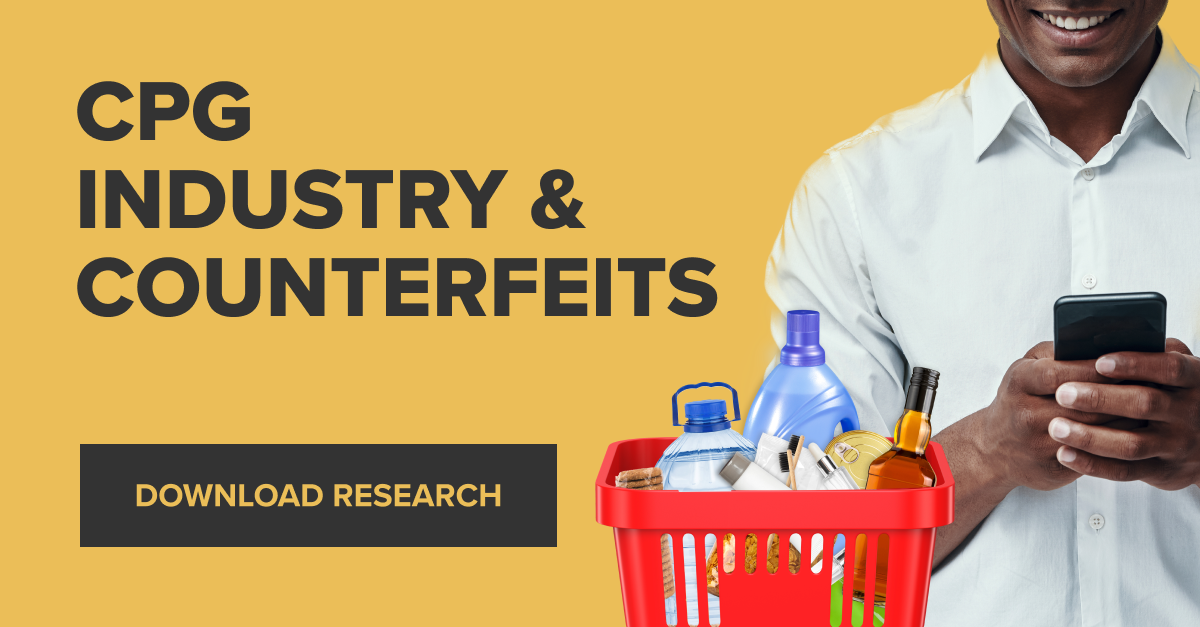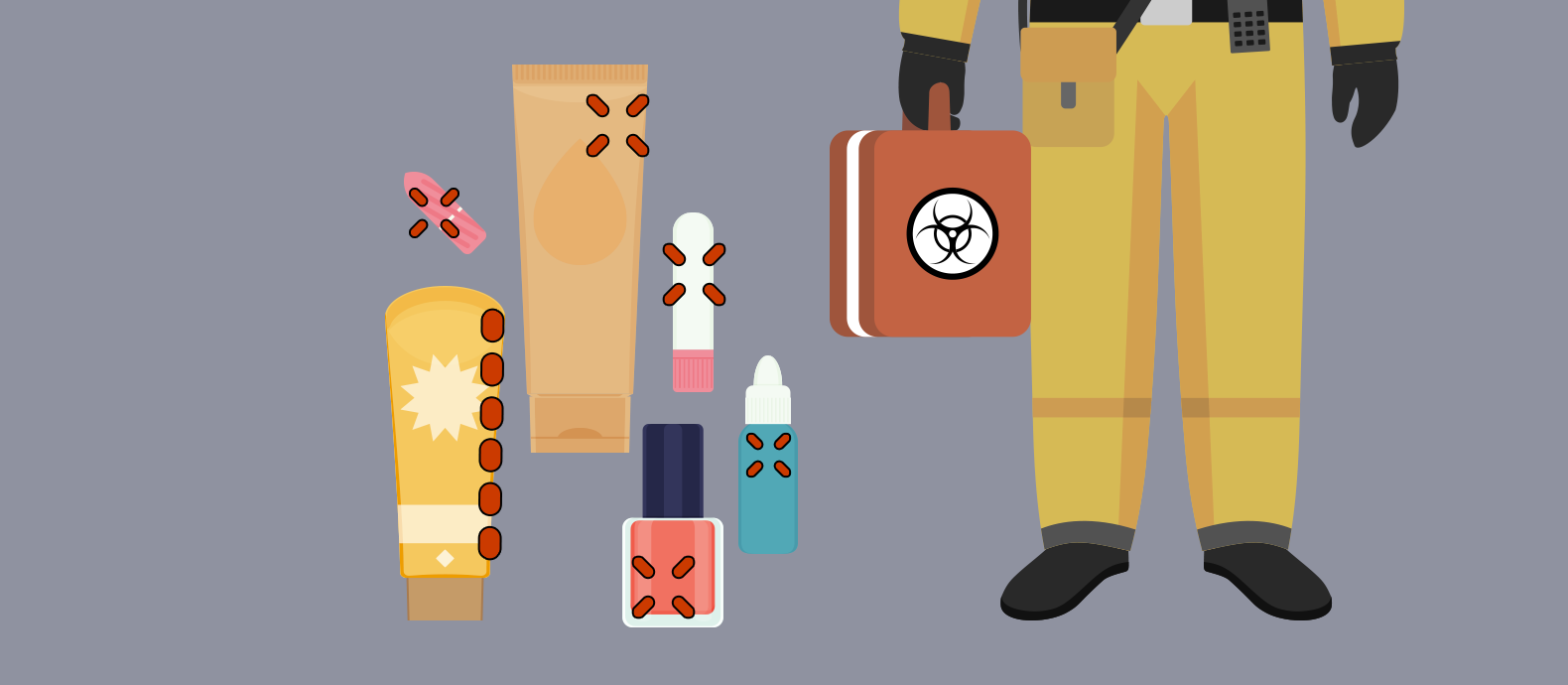It’s the holiday season and cosmetics consumers are on the hunt to find a deal out there. Unfortunately, bargain prices and deals that seem too good to be true often bring the possibility of fraudulent, and dangerous, counterfeit products with them.
- Counterfeit cosmetics are a huge danger to shoppers, especially during the run-up to major holidays.
- There is a long list of dangerous ingredients commonly found in counterfeit cosmetics.
- Counterfeiters pay no heed to consumers’ safety, and flagrantly ignore safety laws and regulations.
- Fake cosmetics products are created in filthy, unhygienic illegal laboratories.
In an industry like cosmetics, it can become a more dangerous adventure than anyone usually imagines. It’s not as simple as realizing you ended up with a fake Louis Vuitton handbag and wishing you had the real deal and hadn’t been taken. With counterfeit cosmetics, the dangers lurk inside the product with the ingredients that are used to make the product look as close to the original as possible.
Before we dive into the ingredients you should be aware of hiding in knock-off cosmetics, it’s important to understand why this problem has continued to grow.
According to an FBI report cited by the National Intellectual Property Rights Center on counterfeit cosmetics and fragrances, “the volume of all sorts of counterfeit cosmetics and fragrances coming into the U.S. is definitely on the rise according to our industry partners as well as law enforcement.” The pace of counterfeit cosmetics is moving along with the growth of cosmetics as consumers continue to buy more cosmetics products year over year.
According to Statistica, from 2010 to 2017 the average annual growth of the global cosmetics market was on average 4.2%. In 2017, the global cosmetics market grew by an estimated 5% compared to the previous year of sales.
With the growth of the cosmetics industry, criminals and counterfeiters have taken to producing products that can trick customers.
The scary part of this is that instead of just getting a fake, consumers are getting potentially dangerous products in the deal. As consumers become more comfortable with purchasing products online, counterfeiters become more adept at selling their fake wares. Different demographics of customers can be targeted by creative counterfeiters around the world by marketing in channels that make it harder to identify, secure evidence and prosecute foreign sellers. To the sellers, it is a lower risk situation for them as they are often located in countries outside of the jurisdiction of law enforcement where major cosmetic companies reside.
The Dangerous Ingredients in Counterfeit Cosmetics
It’s obvious there’s a growing trend of fraudulent products in the cosmetics industry, but the most important aspect of this trend is the danger to consumers when it comes to counterfeit cosmetics. With cosmetics as we’ve discussed, it can be a health hazard that you might not even know is as dangerous as it is.
Depending on the type of counterfeit cosmetic, analysis can reveal a whole range of toxic cosmetic ingredients due to formulations for color, consistency, sheer and texture to keep the product in a visually appealing state. It’s not always an ingredient that is directly added to the product but an unintended ingredient as a by-product from mixing multiple chemicals together to create the final product.
Counterfeiters have no reason to ensure safety and rarely test these final products since they don’t have to abide by health regulations, product testing or get certification procedures. We used a report on toxic cosmetics to reference health effects and dangerous reactions you could get from counterfeit cosmetics:
- Lead – One of the more common ingredients found in counterfeit cosmetics at 5 to 19 times above the legal level. Health effects are reported to be human developmental toxicity, reproductive issues, and organ system toxicity within the kidneys, liver, sensory organs, and the cardiovascular system.
- Arsenic – This dangerous ingredient can show up due to the contamination of other ingredients if not added directly. This used to be a common ingredient in cosmetics in the 1800s. Health effects are reported to be organ toxicity and bioaccumulation, which means arsenic can build up to dangerous levels over time. Concerns are especially high for pregnant women or breastfeeding moms. This product leads to cancer at the highest level.
- Copper – Classified as toxic or harmful by the Environment Canada Domestic Substance List. Persistence and bioaccumulation with enhanced skin absorption of other chemicals.
- Mercury – Mercury is a possible human development toxicant, can lead to nervous system toxicity, as well as immune and respiratory toxicity. This is recognized by many institutions as a toxic chemical. Mercury is particularly hazardous during fetal development and is readily absorbed by the skin. The presence of mercury in any cosmetic is a concern and should not be treated lightly.
- Beryllium – A heavy metal that hasn’t been the subject of extensive research but has been found in counterfeit cosmetic products. Suspected areas of health concern are in reproductive, immune and nervous systems where it can cause toxicity.
- Cadmium – Cadmium is toxic in moderate doses and is a potent antagonist of several essential minerals including calcium, iron, copper, and zinc.
- Aluminum – Aluminum-based compounds vary in their toxicity. Some are linked to neurotoxicity, developmental & reproductive toxicity and cancer. In order to find the effects of aluminum in your cosmetics, you need to find the specific type of aluminum and the concentration level.
- Bacteria – Different kinds of bacteria have been found in counterfeit cosmetics and they are causing infections, skin rashes, and allergic reactions. One more common type of bacteria that has been found in counterfeit cosmetics is E. Coli (Escherichia coli) which can cause severe diarrhea, kidney failure, and anemia.
- Animal Feces – This is a disturbing example of the unsanitary conditions in the manufacturing of counterfeit cosmetics.
- Urine – In some cases, urine has been found in counterfeit perfume formulations.
- Cyanide – This is an ingredient that has been found in counterfeit cosmetics but is most harmful when inhaled.
- Paint Stripper – This is found in counterfeit mascara and can cause severe skin reactions, including swelling to the eyes that can potentially cause long-term damage to the eyes.
Concentrations of Dangerous Ingredients Can Be Off the Charts
Most of the ingredients above have been found in counterfeit cosmetics in sting operations where the products are purchased on the street, from a vendor or from an online store or offering and then tested by a chemist.
A number of organizations have contributed to revealing these facts include internal investigative divisions at places like L’Oreal and MAC Cosmetics, as well as governmental bodies including The FBI, Homeland Security, FDA, Health Products Regulatory Authority (HPRA), major metropolitan police departments, trade organizations, and investigative journalists at local, national and global news institutions.
One thing to note about dangerous and toxic ingredients in counterfeit cosmetics is that variability in the concentration of these chemicals can vary drastically. For instance, in different lab results and sting operations, the lead concentration in counterfeit MAC lipstick was found to have 5 times, 15 times, 19 times and even 300 times the permitted limit. What that tells you is that some counterfeit cosmetics can be much more dangerous than others.
The only way you would know is by having a lab test done on the product. With that in mind, the only completely safe option is to refuse to gamble on what is in your beauty products in the first place. Sticking to authorized retailers, the brand’s outlets and online retail sites is the only way to ensure that you get cosmetic products that are within permissible limits.
It may be shocking that this kind of variability exists in the concentration of dangerous ingredients but when you see what operations look like where these products are made it might make more sense. These are not clean factories, manufacturing centers or systemized operations. Rather, they’re essentially underground laboratories that are unclean, disorganized, pieced together, cramped quarters with the sole goal of getting a product out the door that looks as visually similar to the real thing as possible.
Seeing is believing and really understanding that when you pick up a counterfeit cosmetic product that it was likely put together in an operation that looks similar to those examples that will likely send shivers down your spine.
How to spot fake cosmetics
There are several in-depth pieces here at Red Points that help you understand how to spot a fake. Counterfeit cosmetics are commonly have misspelled words, grammar mistakes and font size inconsistencies on the packaging. For the basics on how to spot a fake, consider the five following things when purchasing: price; quality; packaging; who is selling it; and payment method. It is highly recommended to read through this list in detail and understand what you should be looking out for when you could be faced with making a decision at a marketplace.
Conclusion
When it comes down to it, in this day and age it is essential to protect yourself from fraud and fake products. This is something we all can relate to, but the risks are even higher when these fraudulent products are cosmetics. While that fake Louis Vitton is going to hurt your pride, counterfeit cosmetics can have lasting effects on your health and wellness, which is never worth the risk.
The world of online shopping can be a little like the wild west out there, so you really need to stick to approved retailers or the brand’s own store. In the real world, you need to be careful and stay vigilant as well. Be aware of what is being sold at mall kiosks, outdoor vendors and street fairs as counterfeit products move through these types of sellers as well. Careless shopping for cosmetics could lead to disastrous results.






![[Webinar] Image recognition versus fashion infringements](https://www.redpoints.com/wp-content/uploads/2020/02/webinar-image-recognition-fashion-infringements.png)

